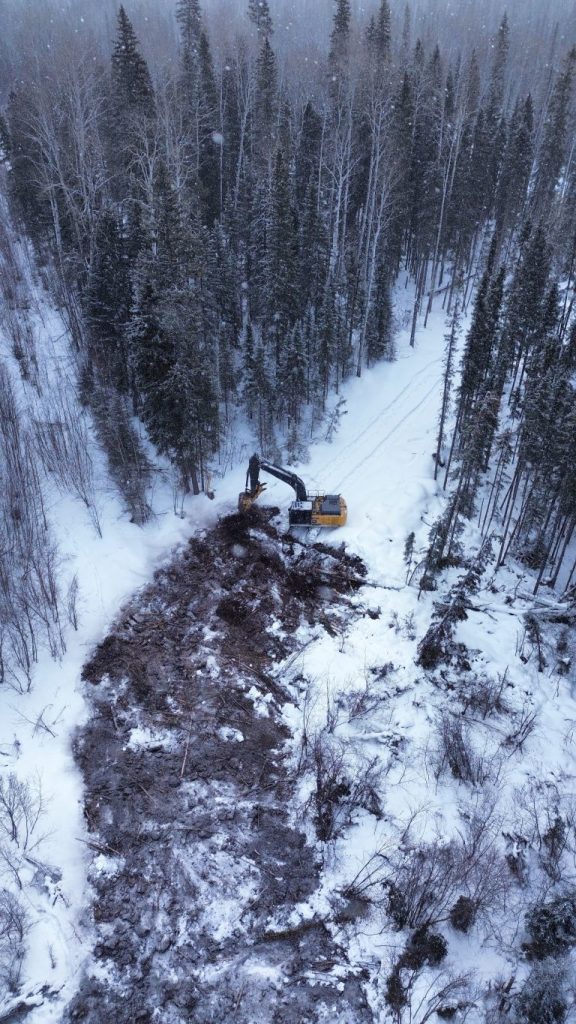The BC Wildfire Service map currently shows 26 active wildfires in the Fort Nelson Zone. To more clearly represent the current wildfire situation, these wildfires will be called “Out” and removed from the map this week. As conditions change and these overwintering fires start to emit heat and smoke in the weeks and months ahead, they will be added to the map as active wildfires with new fire numbers.
Over the winter, BC Wildfire Service staff in the Fort Nelson Zone worked to address known hot spots from previous wildfire seasons. However, snow cover and cooler temperatures continue to limit the ability to detect remaining heat. As a result, not all hot spots have been identified yet and won’t appear on the map until smoke becomes visible.
Changes to the display of overwintering fires:
This year, BCWS is updating the way overwintering fires are displayed on the BC Wildfire Service app and dashboard in the Prince George Fire Centre (PGFC).
- Last year, 2024 overwinter fire growth was tracked under the same fire number used during the 2023 wildfire season, which made it difficult to clearly identify specific areas where fire activity was occurring or expanding.
- This year, when hot spots from previous fires become visible, each will be assigned a new fire number and displayed as a separate incident on the map. This change will provide a clearer picture of where fires are active and help track growth over time.
These updates are being made to improve communication and fire tracking. By providing clearer details on active fire areas and the extent of fire growth, we can better inform the public while also supporting effective response and safety efforts.
Winter wildfire suppression in Fort Nelson
The BC Wildfire Service has been taking advantage of frozen ground conditions this winter to get ahead of overwintering fires in the Fort Nelson Zone. Many of these fires are in areas with a buildup of forest materials and challenging terrain, which becomes even more difficult to work in once the ground thaws.
To reduce the risk of flare-ups later this year, the Fort Nelson Zone collaborated with local industry, provincial partners, and the BC Wildfire Service Predictive Services Unit to trial a winter suppression strategy focused on getting equipment into areas that are usually inaccessible during the snow-free season.
What’s been done so far
- Starting in February, BC Wildfire Service deployed over 15 pieces of heavy equipment—including dozers, feller-bunchers, skidders, and excavators—into priority fire areas.
- Crews constructed more than 87 kilometres of access routes, machine guards, helipads, and fuel-free control lines.
- Work was focused in locations with deep organic soils and known hot spots, identified through infrared scans and local assessments.
- Ice bridges and existing features like seismic lines were used to access remote areas while limiting new ground disturbance.
- Rehabilitation work is already underway to restore machine guards and stream crossings where needed.

What this means for the 2025 fire season
As spring approaches, operations are wrapping up and equipment is being demobilized. However, the work completed this winter will support wildfire response through the 2025 season. The new helipads and fuel-free lines will give crews faster, safer access to remote hotspots—allowing quicker response to flare-ups as conditions dry out.
The BC Wildfire Service will continue to evaluate the effectiveness of these winter suppression efforts and look at refining the approach for future fire seasons.
See Fort Nelson Fire Zone’s innovative approach to managing overwintering wildfires to learn more about how winter operations are helping crews prepare for the upcoming fire season.
